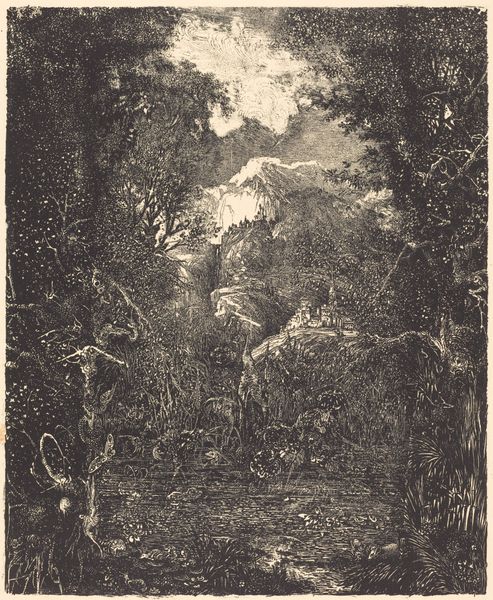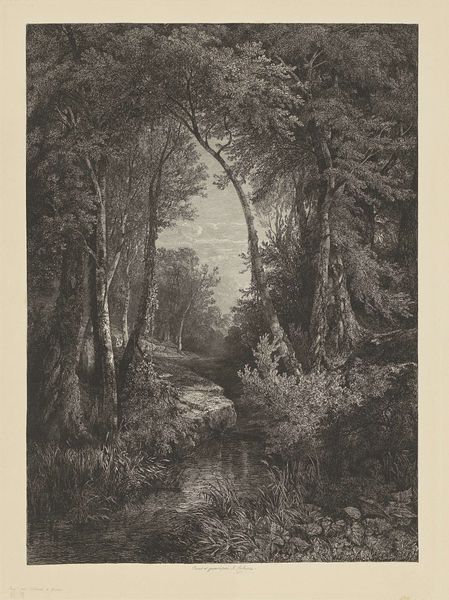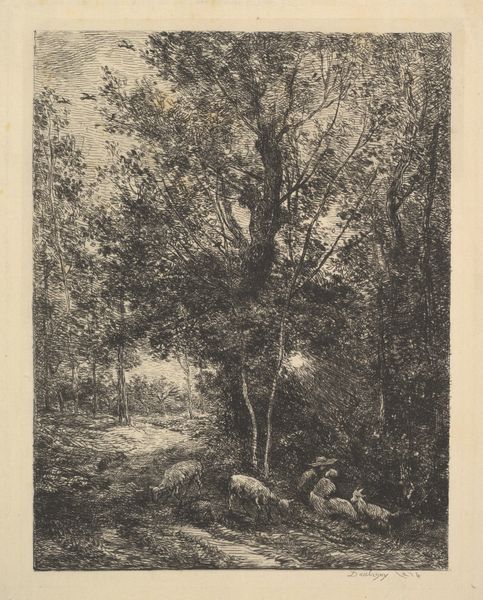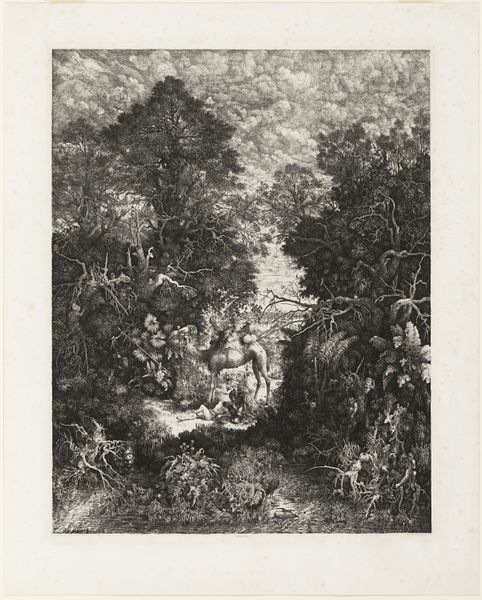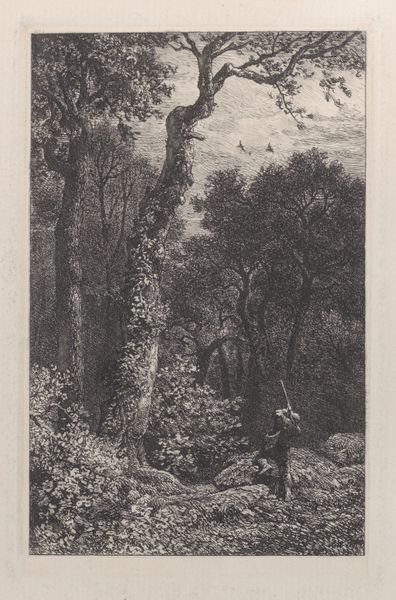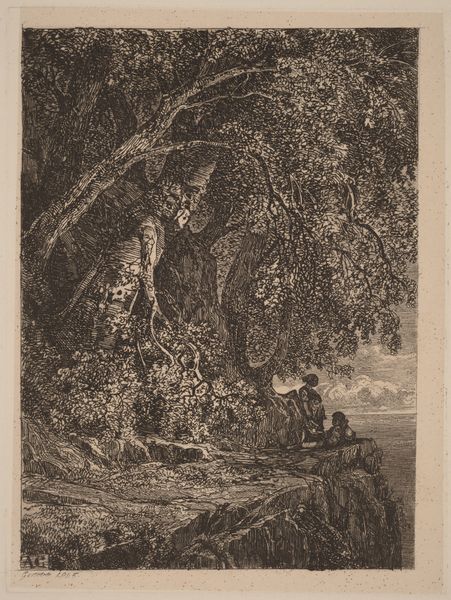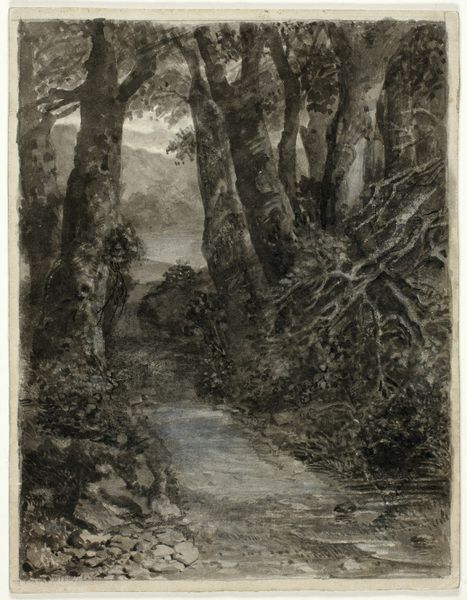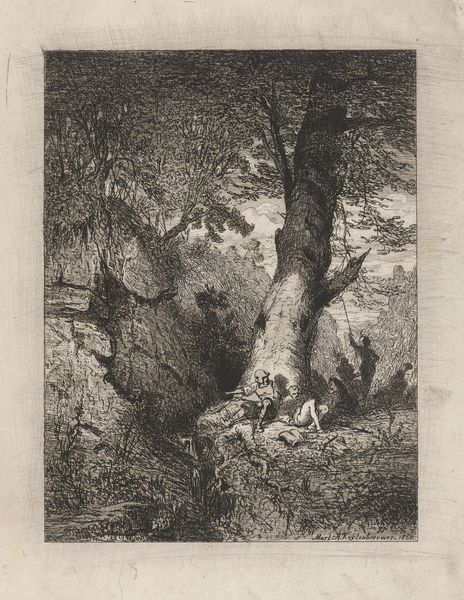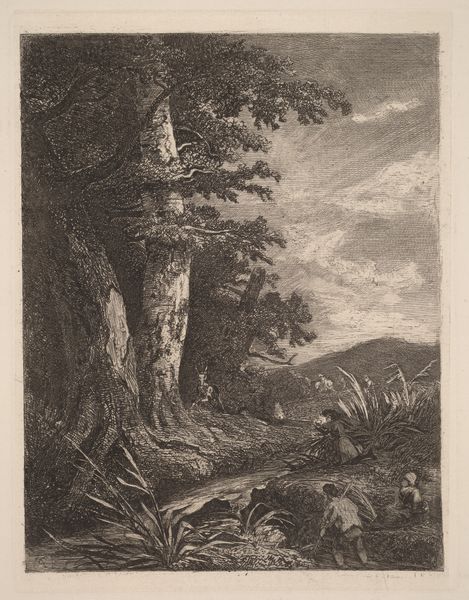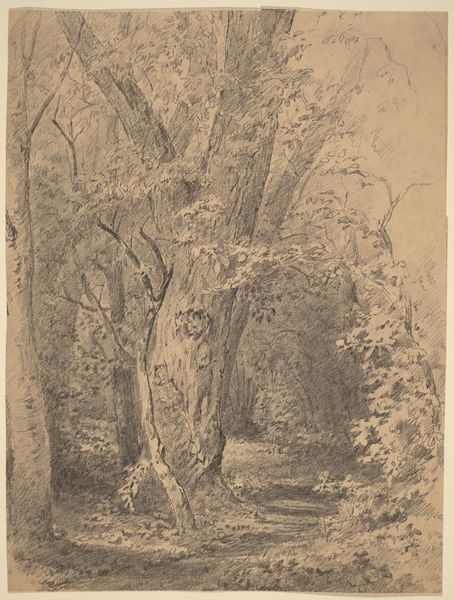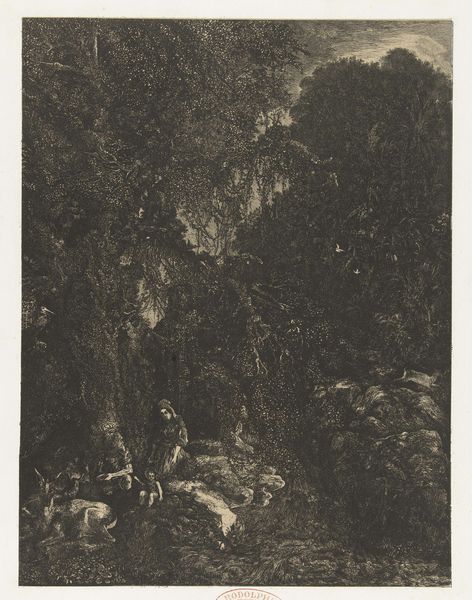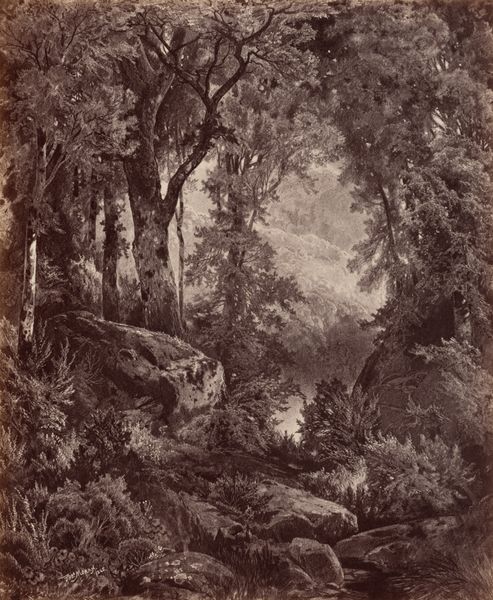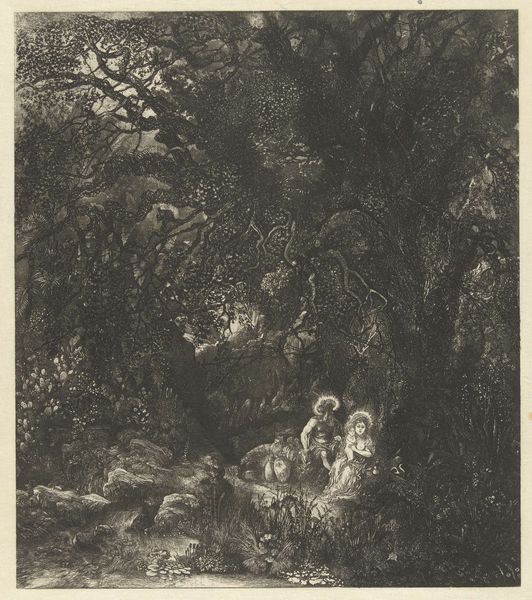
Dimensions: 190 × 151 mm (image/chine); 440 × 340 mm (sheet)
Copyright: Public Domain
Curator: Let’s turn our attention to Rodolphe Bresdin’s 1868 print, "The Cities beyond the Marsh," a detailed scene currently residing here at the Art Institute of Chicago. Editor: Woah, talk about visual overload! My immediate impression is claustrophobia—all those meticulously rendered leaves and reeds are closing in. It feels almost oppressive. Curator: Precisely. It’s a symbolic representation of Romanticism’s engagement with the overwhelming power of nature and the individual's place within it. Note the small settlements in the distance, emblems of civilization, dwarfed by the wild, untamed marsh. Editor: It's incredible he achieved this level of detail with lithography and etching. You can practically feel the scratch of the needle across the plate, a testament to the labor invested. I wonder how many prints he pulled? What paper stock did he favor? These choices shaped the work's reception and its very existence. Curator: Paper and ink become vessels here. Observe how the trees form archways and how light pierces through the canopy—the etching directs your eye to what's sacred within the scene: life’s quiet dramas. There is such rich symbolic detail if we search hard enough: rebirth and decay, ruin and promise all intertwined. Editor: This romantic vision wasn’t spun from thin air, though. The landscape might reflect the industrialization swallowing up natural spaces during his time in 19th-century France. The cities, distant yet present, signal a changing world. Curator: Quite right. Bresdin grappled with these contradictions, presenting a world ripe with anxieties of modernization while still invested in Romantic traditions. The technical prowess certainly amplifies the thematic resonance. Editor: Examining art through materiality helps us appreciate artistic struggles and technical demands. We are invited to confront nature transformed into a product. Thinking of it in these terms offers insight into Romanticism, no longer purely about the feeling. Curator: I appreciate the expanded interpretation, indeed this artwork reminds me that history continues to inform the images we encounter today. Editor: Absolutely, there’s always more to consider and examine in every artwork.
Comments
No comments
Be the first to comment and join the conversation on the ultimate creative platform.
